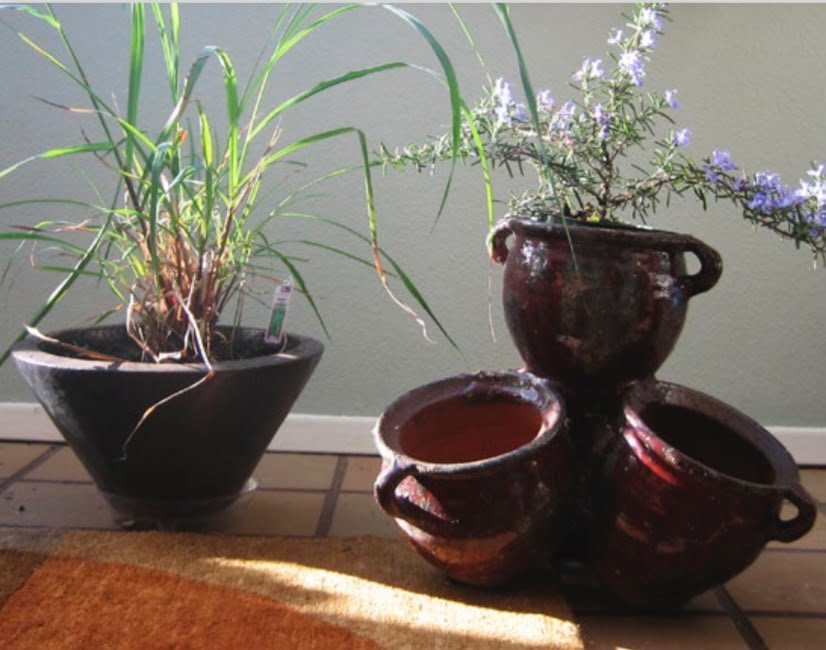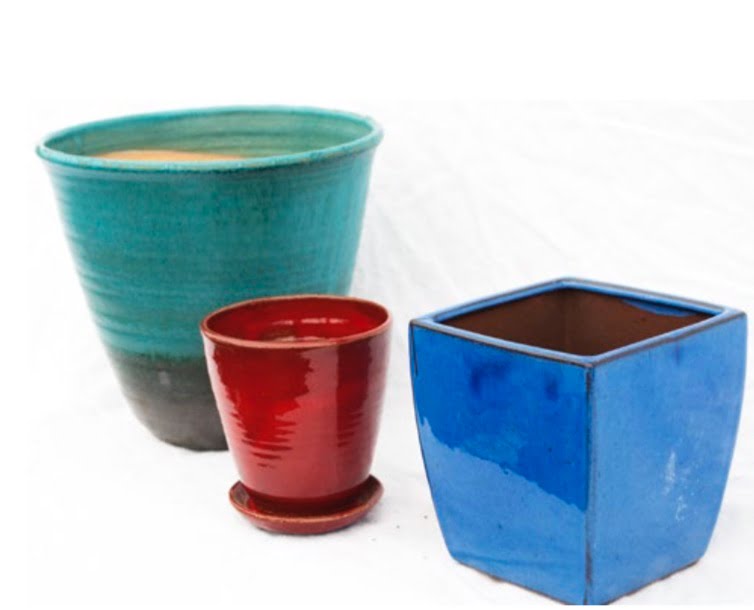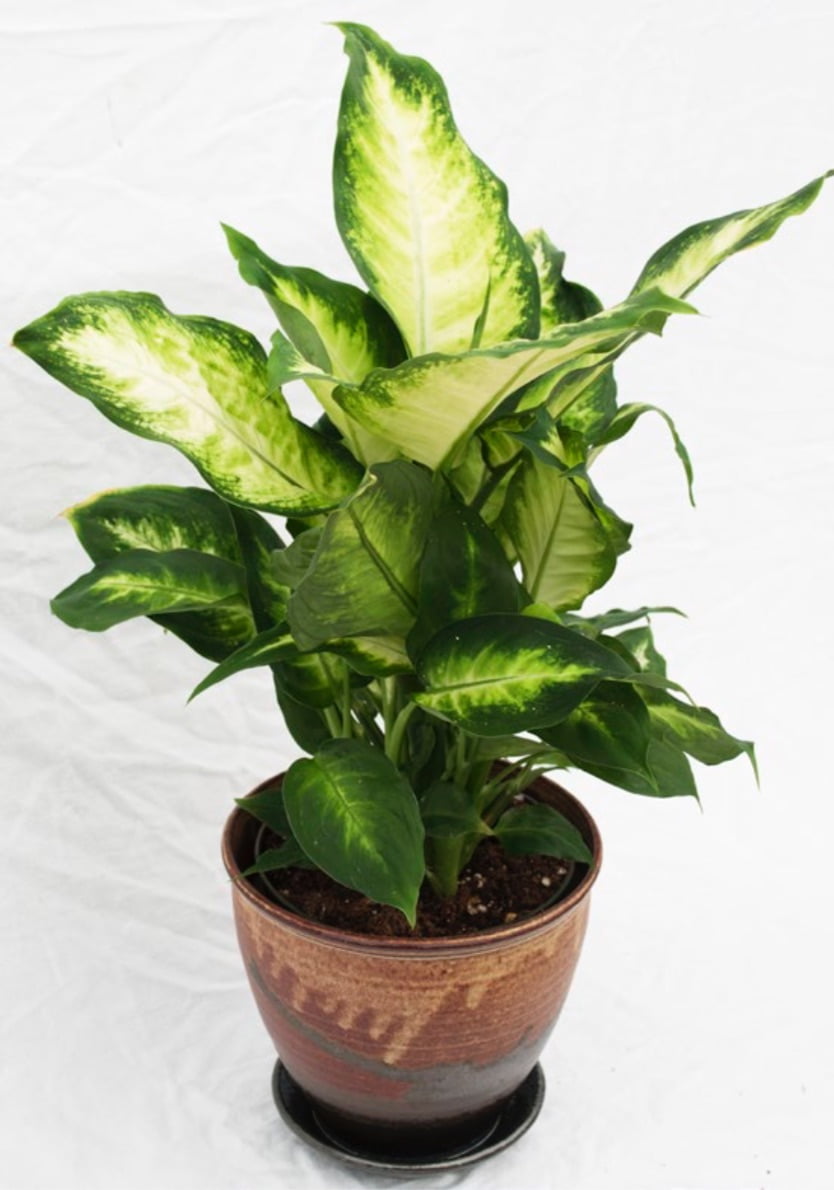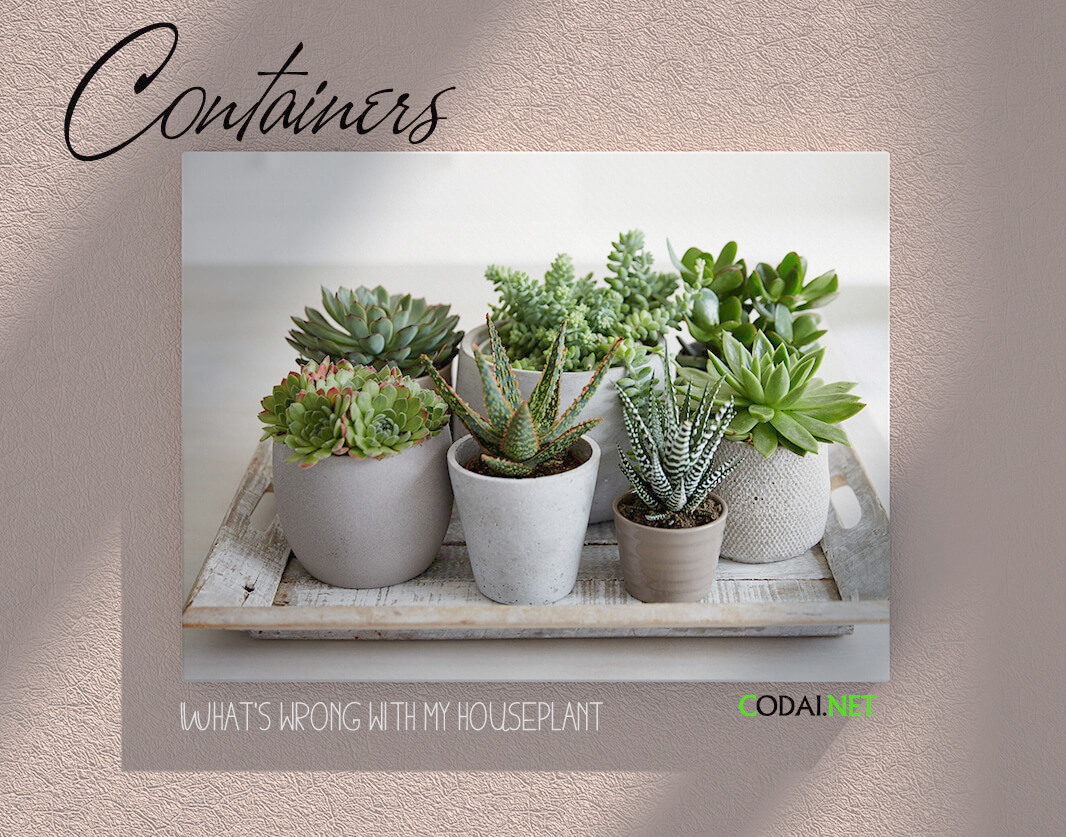[Ebook Việt Hoá] What's wrong with my houseplant (Có vấn đề gì với cây trong nhà của tôi?) - David Deardorff & Kathryn Wadsworth, Chậu cây
[Ebook Việt Hoá] What’s wrong with my houseplant?: CONTAINERS (Chậu)
- Biên tập: Dũng Cá Xinh
- Người dịch: Hạnh Nguyên
ENGLISH
Your houseplants will come to you in a plethora of pot sizes. Smaller pots are measured by diameter in inches. For example, a 4-inch pot will be approximately that in diameter. Manufacturers differ enormously and some 4-inch pots are larger, 4.75 inches across, and some are smaller, 3.5 inches across. Some will be squat and others will be tall.
Larger pots are generally measured by volume. A 1-gallon pot is generally 8 inches in diameter by 7 inches tall. A 2-gallon pot is roughly 10 × 8 inches, a 3-gallon is about 11 × 9.5 inches, and a 5-gallon pot is approximately 14 × 10 inches. There literally are hundreds of variations in the sizes of the inexpensive, thin-walled plastic pots used by nurseries for plant production.
Most of the time when you purchase a houseplant it comes in a 4-inch or 1-gallon pot. Palm trees, citrus trees, and shrubs like hibiscus may be in a 2-gallon pot or even a 5-gallon pot. In any case, your plant will most likely arrive in an inexpensive, thin-walled, black or green plastic container.

Anything that holds a volume of potting medium and that has a drainage hole can be used for a houseplant container. If you want to grow your plant in an old boot, for example, you can do it; you just have to drill a hole in the boot to make sure you have adequate drainage. Wood boxes, tin cans, glass jars, terracotta, fine porcelain, brass, fiberglass, plastic—all these can be used as containers for houseplants. Whatever you use make sure there is at least one drainage hole. If there isn’t then you’ll either have to drill one or use the container as a cachepot, which is a decorative shell for the “real” pot.

A half-inch carbide bit and a 3/4-horsepower electric drill are handy for drilling holes in ceramic containers, but be cautious because your fancy and expensive porcelain or hand-thrown ceramic container is easily broken during the drilling process. You might be happier if you have the holes drilled professionally rather than attempting it yourself. It takes a lot of strength to bear down on the drill on a hard ceramic surface and the noise is absolutely deafening. Be sure to wear ear protection, gog- gles to protect your eyes, and gloves to protect your hands.
Pot shapes. One of the loveliest container shapes is where a wide-bodied pot swoops in to a narrow neck at its top. These are truly beautiful pots; however, they are possibly the worst choice you could make for a houseplant. The problem is that you must pull your plant out of its pot periodically. If the neck is narrower than the body then you either have to cut off the roots to get the plant out, or you have to break your pot. Much better choices are pots with straight sides or ones that flare out wide with a neck that is wider than the body. These shapes make it easy to remove your plant without damaging it or the pot.
Cachepots. If you just cannot stand the look of the ugly pot your plant is in, but your plant is not ready to up-pot into the gorgeous shiny new porcelain, brass, or hand-thrown con- tainer you purchased that perfectly complements your decor, then just plop the ugly pot into your pretty pot and call it done until your plant is ready to up-pot. The pretty pot that conceals the ugly pot is called a cachepot. If your cachepot is very large, too large for your plant even when your plant is ready for moving up, then up-pot your plant (when it’s ready) to a larger but equally cheap and ugly pot and put it back in the decorative cachepot until your plant’s big enough to handle the volume of soil in your cachepot.

If your beautiful cachepot does not have a drainage hole, you’ll need to put 1 to 2 inches of clean pebbles in the bottom of the cachepot. Set your ugly pot on top of the pebbles so that the bottom of the ugly pot never has to sit in a pool of water. Water your plant carefully and never allow the water that drains out of the ugly pot to rise above the pebbles in the bottom of your cachepot. If you accidentally put in too much water then be sure to drain away the excess water so that your plant does not suffer from being waterlogged. Another technique for watering is to remove your plant from the cachepot, take it to the kitchen sink or into the shower, water it, let it drain, then put it back in the cachepot.
TIẾNG VIỆT
Cây trồng trong nhà sẽ có rất nhiều chậu với kích cỡ khác nhau. Các chậu nhỏ hơn được đo bằng đường kính với đơn vị inch (1 inch = 2.54cm). Ví dụ, một chậu cỡ 10cm có đường kính xấp xỉ bằng số đo đó. Các nhà sản xuất làm ra các chậu có kích cỡ khác nhau rất nhiều, một số chậu cỡ 10cm lại lớn hơn số đo đó, tầm 12cm, và một số nhỏ hơn, tầm 9cm. Một số là dạng chậu Squat và số khác là dạng chậu cao.
Các chậu lớn hơn thường được đo bằng thể tích. Chậu 1 gallon (3.785 lít) thường có đường kính 20cm x cao 18cm. Chậu 2 gallon (7.57 lít) là khoảng 25.4 cm × 20cm, 3 gallon (11.35 lít) là khoảng 28 × 24 cm và chậu 5 gallon (19 lít) là khoảng 35.56 × 25.4 cm. Thực sự có hàng trăm biến thể về kích cỡ của các loại chậu nhựa thành mỏng, giá cả hợp lí được các vườn ươm sử dụng để sản xuất cây trồng.
Hầu như mỗi khi bạn mua một loại cây cảnh trong nhà, nó thường được trồng trong chậu 10cm hoặc 3.785 lít. Cây Cọ, cây họ Cam Quýt và cây bụi như Dâm Bụt có thể trồng trong chậu 2 gallon (7.57 lít) hoặc thậm chí là chậu 5 gallon (19 lít). Cây trồng của bạn có thể sẽ được đặt trong chậu nhựa có thành mỏng, màu đen hoặc xanh lá cây giá rẻ.

Các vật thể có thể tích như giá thể và lỗ thoát nước đều có thể được sử dụng làm chậu cây. Ví dụ, nếu bạn muốn trồng cây trong một chiếc ủng cũ, bạn có thể làm điều đó bằng cách khoan một lỗ trên đó để tạo ra hệ thống thoát nước. Hộp gỗ, lon thiếc, lọ thủy tinh, đất nung, sứ tốt, đồng thau, sợi thủy tinh, nhựa — tất cả những thứ này đều có thể được sử dụng làm chậu cây trong nhà. Bất kể bạn dùng loại chậu nào hãy đảm bảo có ít nhất một lỗ thoát nước. Nếu không có thì bạn sẽ phải khoan một lỗ hoặc sử dụng chậu làm phần bao che cho chậu hoa, đây là lớp vỏ ngoài trang trí cho chậu “thật”.

Một mũi khoan cacbua nửa inch (1.2cm) và một máy khoan điện 3/4 mã lực rất tiện dụng cho việc khoan lỗ trong chậu sứ. Nhưng bạn hãy thận trọng vì hộp sứ lạ mắt và đắt tiền hoặc hộp gốm thủ công sẽ dễ bị vỡ trong quá trình khoan. Chậu đã có lỗ khoan chuyên nghiệp sẽ tốt hơn là tự mình khoan. Bề mặt gốm cứng phải chịu áp lực lớn từ máy khoan và tiếng ồn nó gây ra cực kì chói tai. Nhớ đeo kính bảo vệ tai, kính bảo vệ mắt và găng tay để bảo vệ tay.
Hình dạng chậu. Một trong những hình dạng chậu xinh nhất là loại chậu thân rộng cổ hẹp. Đó là loại chậu đẹp; tuy nhiên, chúng có thể là sự lựa chọn tồi tệ nhất để trồng cây trong nhà. Vấn đề là bạn phải “lôi” cây ra khỏi chậu định kỳ. Nếu cổ hẹp hơn thân thì bạn phải cắt bỏ rễ để lấy cây ra, hoặc bạn phải đập vỡ chậu.
Những chiếc chậu có cạnh thẳng hoặc những chiếc chậu có hình dáng xòe rộng với phần cổ rộng hơn phần thân là những lựa chọn tốt hơn. Chậu dạng này giúp bạn dễ dàng lấy cây ra mà không làm hỏng cây hoặc chậu.
Chậu cachepot. Bạn có thể không chịu được vẻ ngoài xấu xí của chậu nhưng cây lại chưa sẵn sàng để sang chậu sứ, đồng thau hoặc chậu thủ công mới sáng bóng tuyệt đẹp. Khi ấy, bạn chỉ cần thả chiếc chậu xấu xí vào trong chiếc chậu xinh xắn và đợi cây sẵn sàng thay chậu. Chiếc chậu xinh xắn che đi cái chậu xấu xí được gọi là chậu cachepot.
Nếu chậu cachepot quá lớn so với cây trồng dù nó đã sẵn sàng để thay chậu, thì hãy chuyển cây của bạn (khi nó đã sẵn sàng) sang một cái chậu lớn hơn nhưng rẻ tiền và xấu xí. Sau đó, bạn đặt nó trở lại chậu cachepot trang trí cho đến khi cây của bạn đủ lớn để xử lý khối lượng đất trong chậu cachepot .

Nếu chậu cachepot xinh đẹp của bạn không có lỗ thoát nước, bạn sẽ cần đặt số đá cuội sạch cao tầm 2.5 đến 5cm vào đáy chậu. Đặt chiếc chậu xấu xí của bạn lên trên những viên sỏi để đáy nó không nằm trong một vũng nước. Tưới nước cẩn thận cho cây và không để nước thoát ra khỏi chậu ngập lên trên những viên sỏi dưới đáy chậu.
Nếu bạn vô tình tưới quá nhiều nước thì nhớ xả bớt nước thừa để cây không bị úng nước. Một kỹ thuật khác để tưới nước là lấy cây ra khỏi chậu cachepot, mang cây vào bồn rửa bát hoặc vào vòi hoa sen, tưới nước, để cho cây thoát nước, sau đó đặt cây trở lại chậu.



